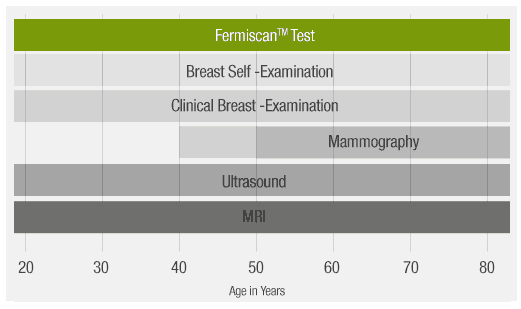Bio Farmag Test
In 1999, Australian physicist Prof. Veronica James and her colleagues, Dr John Kearsley, Dr Tom Irving, Prof. Yoshiyuki Amemiya and Dr David Cookson, published a paper in Nature in which they reported that by using X-rays generated by a synchrotron, they observed a correlation between the incidence of breast cancer and an observed change in the X-ray diffraction pattern of hair from afflicted individuals [1]. The diffraction patterns of all hair samples (23 out of 23) collected from women diagnosed with breast cancer exhibited the change. Of the samples taken from patients not suspected of having breast cancer, 86% (24 out of 28) of the diffraction patterns were normal.
A study published in the International Journal of Cancer in 2005 [2], presented data that extended these numbers to 503 human samples with similar levels of sensitivity and specificity and also provided evidence that the diffraction change specific to breast cancer can be observed in an animal model of breast cancer.
In January 2008, in the International Journal of Cancer 2008 [3], the results of studies performed by Bio Farmag scientists, independently of the original inventor, were presented.
The data broadly confirmed the original inventor’s findings (that breast cancer can be detected by synchrotron X-ray diffraction of hair). The accuracy of diagnosis was 89%, which compares favourably with current breast cancer screening methods [4]. Sensitivity – the ability to detect breast cancer – was 90%, and specificity – the ability to detect the absence of cancer was 87%, confirming the technology’s high accuracy.The scientists concluded that the data showed that “there is a correlation between an altered X-ray diffraction pattern of hair and the presence of breast cancer, (and therefore the technique) has the potential to provide a non-invasive test for the presence of breast cancer”.
In a further significant development, this study showed evidence that the technology could be used to monitor the success of cancer treatment, which would significantly expand the clinical value of the test should the finding be confirmed in larger studies
Bio Farmag is currently conducting a 2000 patient validation trial of this technology. The trial results to date (December 2007) have broadly confirmed the early findings.

The Bio Farmag Test requires individuals to supply twenty (20) strands of untreated scalp hair with a minimum length of 30mm.
The hairs are then exposed to a finely focused X-ray beam for up to thirty (30) seconds. The diffracted X-rays are collected as an image which is then analysed to determine if subtle changes are present in the image that are indicative of the presence of breast cancer.
To date, 1,365 hair samples have been studied with over 200 of these being from individuals specifically known to have breast cancer. Breast cancer was detected in these pathological samples by X-ray diffraction in blinded studies.
While there have been no false negatives detected to date, there have been a number of “false positives” which, wherever possible, were followed up. Some of these were later confirmed to be true positives [2].
Upon successful completion of the validation trial, Bio Farmag expects the test to be commercially available to women in 2008.
References
[1] James V, Kearsley J, Irving T, Amemiya Y, Cookson D. Using hair to screen for breast cancer. Nature vol. 398: 33-4, 1999.
[2] James V, Corino G, Robertson T, et al. Early diagnosis of breast cancer by hair diffraction. Int. J Cancer ; vol. 114: 969-72, 2005.
[3] Corino G, French P. Diagnosis of breast cancer by X-ray diffraction of hair.
Int. J Cancer ; vol. 122: 847-856, 2008.
[4] Studies conducted in UK, Singapore, Australia and USA. Click here for details
